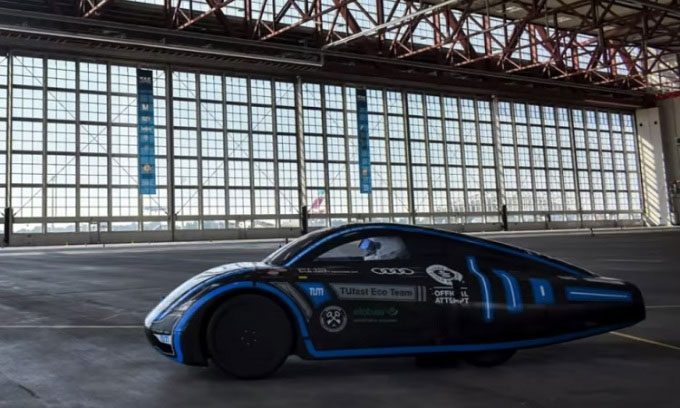Students from the Technical University of Munich (TUM) create a super-light electric vehicle that sets a world record for range.
With a distance of over 2,500 km on a single charge, TUM students have broken the record for the longest range electric vehicle (not including solar electric vehicles). This new record is several times higher than the specifications of the luxury electric vehicle, Lucid Air (which has a range of over 805 km). The Muc022, a one-seat vehicle with an aerodynamic shape, operates with a 15.5 kWh battery, as reported by New Atlas on September 13.

TUfast Eco equips the Muc022 electric vehicle with a larger battery to achieve the record. (Photo: TUfast Eco).
Students from the TUfast Eco team at TUM did not drive over 2,500 km in one day; instead, they needed to secure their name in the Guinness World Records by beating the current range record of 1,608.54 km on a single charge. They spent 7 days at the Munich Mobility exhibition last week to set the record. They drove the vehicle in a hangar provided by Munich Airport to eliminate weather impacts over nearly a week.
The TUfast Eco team not only became the first to drive over 1,600 km but also surpassed the previous record set by the American company IT Asset Partners in California in 2017 by 60%. The students set the record in 4 days and used the remaining two days to maximize the distance before the battery ran out.
The TUM students completed the 1,600 km distance using only a 15.5 kWh battery, comparable to leading hybrid or electric vehicles on the market today, such as the Lucid Air Grand Touring and Tesla Model S. This figure translates to 0.6 kWh/100 km, significantly lower than the common energy consumption efficiency of electric vehicles, which is around 13 kWh/100 km.
The vehicle was developed last year, specifically for competitions. The Muc022’s elongated, teardrop-shaped body has a drag coefficient of 0.159, lower than any vehicle currently on the market, including the solar electric vehicle Lightyear 0. The Muc022 weighs only 170 kg without the driver, minimizing the requirements for the 400 W permanent magnet synchronous motor.




















































